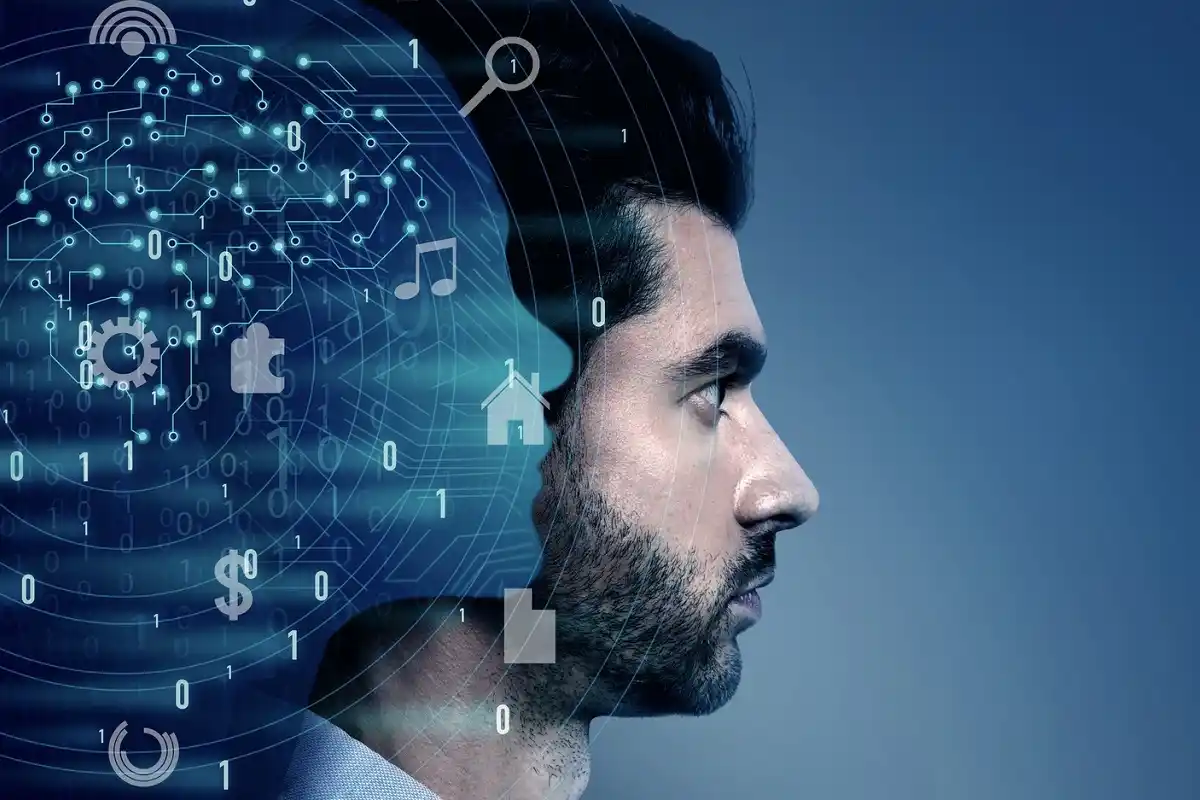Digital twins are virtual replicas of physical objects or systems that are created using data and advanced technologies such as machine learning, artificial intelligence, and the Internet of Things (IoT). These virtual replicas can be used for a variety of purposes, including testing and simulating designs, predicting performance and behavior, and optimizing operations and maintenance.
At its core, a digital twin is a software model that is based on data collected from sensors and other sources. The model can be used to simulate the physical object or system in real time, allowing for accurate predictions and insights.
Digital twins are increasingly being used in a variety of industries, including manufacturing, healthcare, transportation, and construction. In manufacturing, for example, digital twins can be used to simulate and optimize the production process, reducing costs and improving quality. In healthcare, digital twins can be used to simulate patient behavior and predict outcomes, allowing for more personalized treatment plans.
One of the key advantages of digital twins is their ability to learn and adapt over time. By continuously collecting and analyzing data, digital twins can be used to improve performance and optimize processes in real time. This makes them an important tool for organizations that want to stay ahead of the curve and remain competitive in today’s fast-paced business environment.
Overall, digital twins represent a significant technological advancement that has the potential to revolutionize a wide range of industries. As technology continues to evolve, it is likely that we will see even more innovative uses and applications emerge.
Advancements in Digital Twin Technology
Increased use of artificial intelligence and machine learning
Digital twins are becoming more sophisticated as more companies integrate artificial intelligence and machine learning algorithms. AI and machine learning can help identify patterns and relationships in large sets of data, making it possible to create more accurate digital models of physical systems. By enabling the digital twin to “learn” from its environment and make predictions based on data, it can become more accurate over time.
Advancements in edge computing and cloud technology
Edge computing allows data to be processed closer to where it’s generated, reducing latency and increasing the speed of analysis. This can be especially useful for applications such as autonomous vehicles, where real-time data analysis is critical. Cloud technology, on the other hand, enables large amounts of data to be stored and accessed from anywhere, making it possible to create more comprehensive digital twins.
Integration with blockchain technology for improved security and data ownership
Digital twins generate vast amounts of data, and ensuring that this data is secure and owned by the appropriate parties is critical. Blockchain technology can be used to ensure that data is tamper-proof and transparently tracked throughout its lifecycle. This can help to ensure that data privacy is maintained and that data ownership is clearly established.
Overall, these advancements in digital twin technology are helping to improve the accuracy and reliability of digital twins, as well as their security and privacy. As technology continues to evolve, we can expect to see even more sophisticated applications of digital twins in various industries.
Predictions for Future Applications of Digital Twins
Increased use of digital twins in smart cities and urban planning
Digital twins can be used to create virtual replicas of entire cities, allowing planners to test out different scenarios and see how changes to infrastructure, traffic patterns, and other factors would impact the city as a whole. By simulating the effects of proposed changes, digital twins can help cities make more informed decisions and improve the quality of life for residents.
Integration with augmented reality and virtual reality
Augmented and virtual reality technologies can be used to enhance the simulations generated by digital twins, allowing users to interact with and visualize complex systems in more immersive ways. For example, a digital twin of a manufacturing plant could be viewed using virtual reality, allowing users to explore the plant and see how different components interact in real-time.
Use of digital twins in space exploration and the aerospace industry
Digital twins are already being used to simulate spacecraft and predict how they will perform in different environments. In the future, digital twins could be used to help plan and execute complex missions to other planets and even build entire space habitats.
Energy sector for optimization of energy systems and grids
Digital twins can be used to create virtual replicas of energy systems, allowing operators to test out different scenarios and optimize the systems for maximum efficiency. For example, a digital twin of a power grid could be used to predict how different factors such as weather and demand would impact the grid and help operators make more informed decisions.
Overall, these predictions for future applications of digital twins suggest that the technology will continue to play an important role in a range of industries, from city planning to space exploration. By providing accurate and immersive simulations of complex systems, digital twins can help organizations make better decisions and improve efficiency and performance.
Future Trends in Digital Twin Adoption
Digital twins are increasingly being used to monitor the condition of physical assets, such as machinery and equipment. By creating a digital twin of a piece of equipment, operators can monitor its performance in real time and predict when maintenance will be required. This can help to reduce downtime and maintenance costs.
The growing importance of digital twins in supply chain management and logistics
Digital twins can be used to create virtual replicas of supply chain networks, allowing operators to optimize their operations and predict potential disruptions. By simulating the impact of different factors such as weather, demand, and transportation delays, digital twins can help to improve efficiency and reduce costs in supply chain management.
Expansion of digital twins into consumer products for personalized customization and design.
Digital twins are increasingly being used in the design and manufacturing of consumer products, such as clothing and furniture. By creating a digital twin of a customer, manufacturers can create personalized products that are tailored to their specific needs and preferences. This can help to improve customer satisfaction and loyalty.
The emergence of digital twin marketplaces for sharing and monetizing digital twin data
As more organizations create digital twins, there is a growing need for platforms that enable the sharing and monetization of digital twin data. Digital twin marketplaces can help to facilitate the exchange of data between organizations, allowing them to collaborate and create more comprehensive digital twins. This can help to accelerate innovation and drive new business models.
Overall, these future trends in digital twin adoption suggest that the technology will continue to play a critical role in a range of industries, from manufacturing to logistics to consumer products. By providing real-time monitoring and predictive analytics, digital twins can help organizations improve efficiency, reduce costs, and create personalized experiences for their customers. Additionally, the emergence of digital twin marketplaces is likely to lead to new business models and collaboration opportunities in the future.
Challenges and Considerations for the Future of Digital Twins
Data privacy and security concerns
As digital twins become more prevalent and contain increasingly sensitive information, there are concerns about data privacy and security. Organizations must take steps to ensure that digital twin data is protected from unauthorized access and misuse. This includes implementing strong security measures and adhering to data protection regulations.
Standardization and interoperability challenges
As the number of digital twins grows, there is a need for standardization and interoperability between different systems. This is essential to enable different digital twins to communicate with each other and share data. Organizations must establish common standards and protocols to ensure that digital twins can work together seamlessly.
Ethical considerations around the use of digital twins
Digital twins raise ethical considerations around issues such as privacy, consent, and bias. For example, organizations must consider whether they have obtained permission to use personal data in digital twins and whether the data is being used in a fair and unbiased way. As the use of digital twins becomes more widespread, it is important to address these ethical concerns and establish guidelines for their use.
Digital twin technology is complex and requires specialized skills to develop and manage. Organizations must invest in training and development to ensure that they have the necessary expertise to develop and manage digital twins effectively. This includes skills in areas such as data analytics, machine learning, and cybersecurity.
Overall, these challenges and considerations highlight the need for organizations to approach the adoption of digital twins with caution and to take steps to address potential issues such as data privacy and security, standardization, and ethical concerns. By doing so, organizations can ensure that they are able to leverage the full potential of digital twin technology while minimizing risks and maximizing benefits.
Final Thoughts
The future of digital twin technology looks promising, with a range of applications and potential benefits. However, to fully realize the potential of digital twins, continued innovation and development will be essential. This includes investment in research and development, training and development of skilled professionals, and collaboration between different organizations and industries. By doing so, we can ensure that digital twin technology continues to drive innovation and create value in the years to come.



